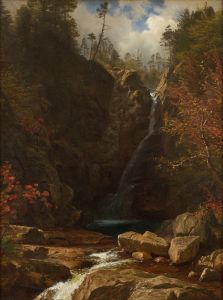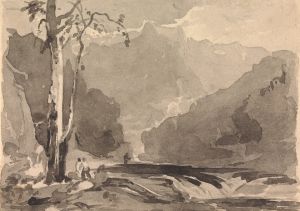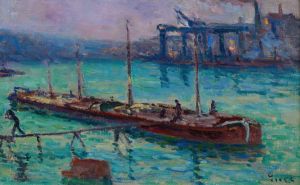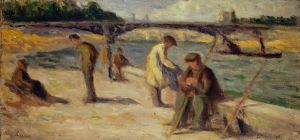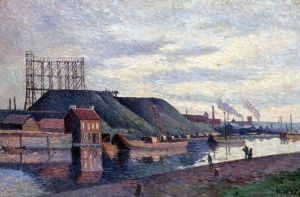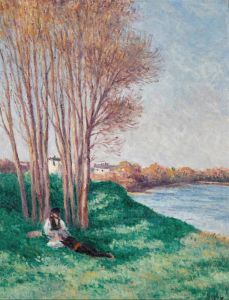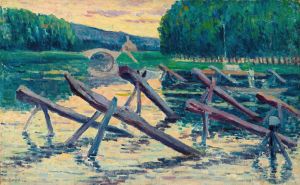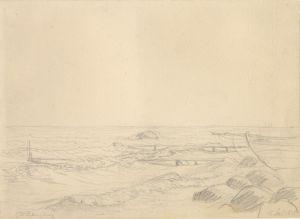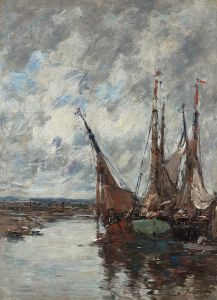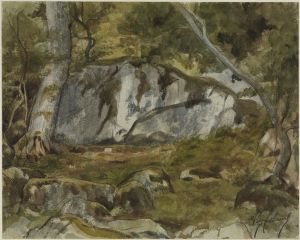
Les rochers à Agay
A hand-painted replica of Maximilien Luce’s masterpiece Les rochers à Agay, meticulously crafted by professional artists to capture the true essence of the original. Each piece is created with museum-quality canvas and rare mineral pigments, carefully painted by experienced artists with delicate brushstrokes and rich, layered colors to perfectly recreate the texture of the original artwork. Unlike machine-printed reproductions, this hand-painted version brings the painting to life, infused with the artist’s emotions and skill in every stroke. Whether for personal collection or home decoration, it instantly elevates the artistic atmosphere of any space.
Maximilien Luce was a prominent French Neo-Impressionist painter known for his vibrant landscapes and depictions of everyday life. Born in Paris in 1858, Luce initially trained as an engraver before turning to painting. He became associated with the Neo-Impressionist movement, which was characterized by the use of pointillism—a technique involving the application of small, distinct dots of color to form an image. Luce was influenced by the works of Georges Seurat and Paul Signac, who were pioneers of this style.
"Les rochers à Agay" is one of Luce's notable works, capturing the scenic beauty of the coastal area of Agay, located in the Provence-Alpes-Côte d'Azur region of southeastern France. Agay is known for its picturesque landscapes, characterized by rocky shores and the vibrant colors of the Mediterranean environment. This painting exemplifies Luce's mastery of light and color, showcasing his ability to capture the natural beauty of the French coastline.
In "Les rochers à Agay," Luce employs his signature pointillist technique to depict the rugged rocks and the shimmering waters of the Mediterranean Sea. The painting is a testament to Luce's skill in using color to convey the atmosphere and mood of a scene. The careful placement of dots and strokes creates a sense of movement and light, drawing the viewer into the tranquil yet dynamic setting.
Luce's choice of subject matter reflects his interest in capturing the essence of the natural world. The rocks at Agay, with their varied textures and hues, provide a perfect canvas for Luce to explore the interplay of light and shadow. The painting's composition is balanced, with the rocky foreground leading the eye towards the expansive sea and sky, inviting contemplation and appreciation of nature's beauty.
Throughout his career, Luce was committed to the ideals of the Neo-Impressionist movement, which sought to bring scientific precision to the art of painting. By using the principles of optical mixing, where colors are blended by the viewer's eye rather than on the palette, Luce was able to achieve a luminosity and vibrancy in his work that was highly innovative for his time.
"Les rochers à Agay" is a fine example of Luce's dedication to this technique and his ability to convey the subtleties of natural light. The painting not only highlights Luce's technical prowess but also his deep appreciation for the landscapes of France. It stands as a testament to his contribution to the Neo-Impressionist movement and his influence on subsequent generations of artists.
Maximilien Luce's work, including "Les rochers à Agay," continues to be celebrated for its beauty and technical brilliance. His paintings are held in high regard and can be found in various museums and private collections around the world. Luce's legacy as a master of color and light endures, and his works remain a source of inspiration for art enthusiasts and scholars alike.





